The amount of Carbon Dioxide and other greenhouse gases in the atmosphere has become increasingly important to scientists and to the world population. Is our planet in a cycle of warming? Are humans having an impact on this natural cycle? What will happen to the global climate if the temperature continues to rise? These are big questions that have sparked much debate and concern. The experiments that are being carried out here by Dr. Natali and the others are just a small part of the scientific effort to understand what is going on so that we can deal with it in a reasonable way.
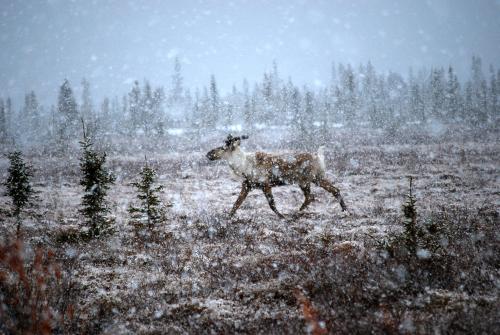
There are many experiments taking place throughout the year at this study site. I will try to explain the warming experiments that we have been working on so far. Then as we progress through the season, we will be talking about some of the other experiments that are aimed at collecting related data.
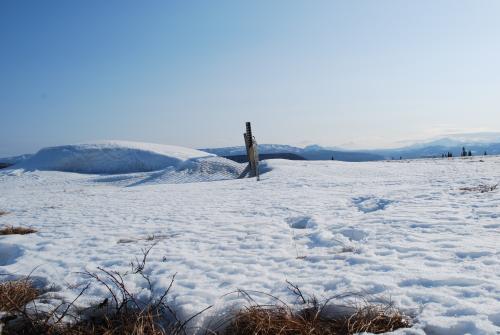
When I arrived in April, we set about measuring the snow depth on both sides of the snow fence that had been up all winter. If the weather was to warm in this area of Alaska, the air would be able to hold more moisture which may result in deeper snow over the winter. The snow actually insulates the ground from the air and keeps it from getting colder. So the extra snow would really be warming the ground. We have taken the snow depths and we have temperature readings at different depths in the soil to see how the two factors relate to each other. In general, we see that the warming side of the fence, the side with extra snow, does not cool as much as the control side, the side with the same snow as the surrounding areas.
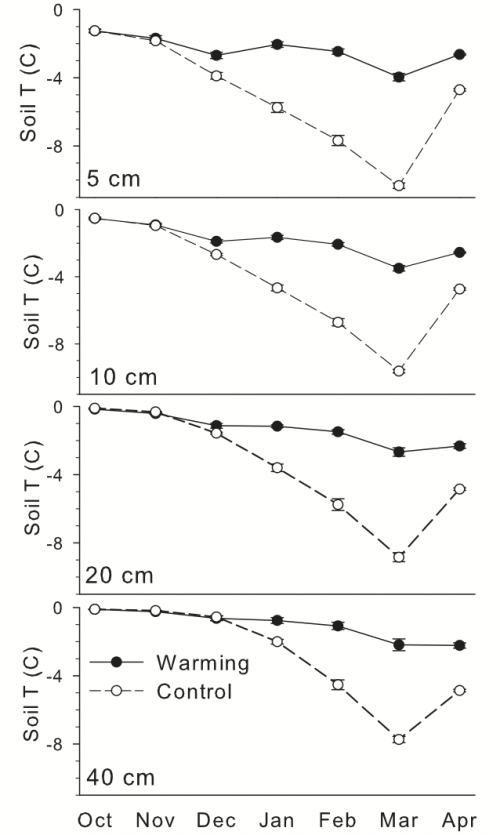
This winter warming effect can cause the decomposers to increase their activity, releasing more CO2 through respiration. It can also promote early plant development and greening, which will bring on photosynthesis more and remove CO2 from the air. This is one type of balance we are trying to measure over the winter.
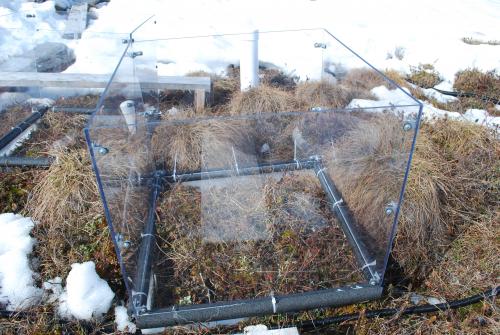
The other experiment we have been working on is the summer warming experiment. This is where the chambers come in to play. Once the snow has melted, which is why we had to remove the snow from the fence area, the ground begins to warm up from the sun and the air. But what if the air warmed the ground more than it is used to? We use the Summer Warming Chambers, SWC, to trap small amounts of heat from the sun and warm the ground inside of the chambers more than the surrounding areas. Again, the warming ground promotes the respiration, CO2 out, and photosynthesis, CO2 in. Now we are looking at the balance of the CO2 during the summer months.
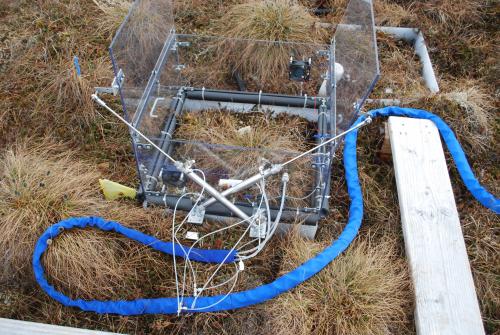
To get these measurements we use the CO2 Flux Chambers, FC. All of the FC are equipped with arms, to open and close the tops, with tubes, to sample the air inside, and with internal fans to mix the inside air so that the tubes do not sample just the air in front of them. But there are two sizes of FC. The experimental ones are the same large size as the SWC. Both of these larger chambers heat up and cool down equally, so when the air sample is taken in these, the doors close and the fan comes on for just a couple of minutes. When the sample is taken, the doors open and the fans shut off.
The smaller FC are the control chambers. They sample the same as the larger FC but they have fans that are running at all times and their smaller size does not heat up the ground inside. This all keeps the ground in the smaller chambers the same as the ground outside the experimental area. In this way we can compare the samples from both sizes of FC and see if the warming is causing the CO2 to increase or decrease over time during the summer months.
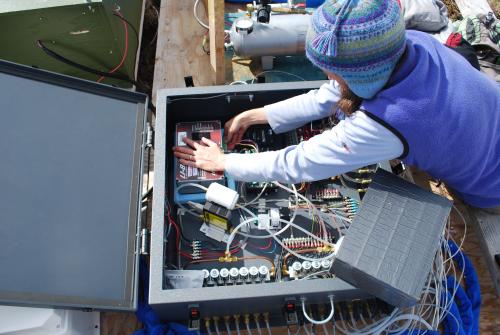
The data can be collected through out the year, or several years, and then put together to determine the CO2 balance in the tundra under normal and warming conditions.


Comments